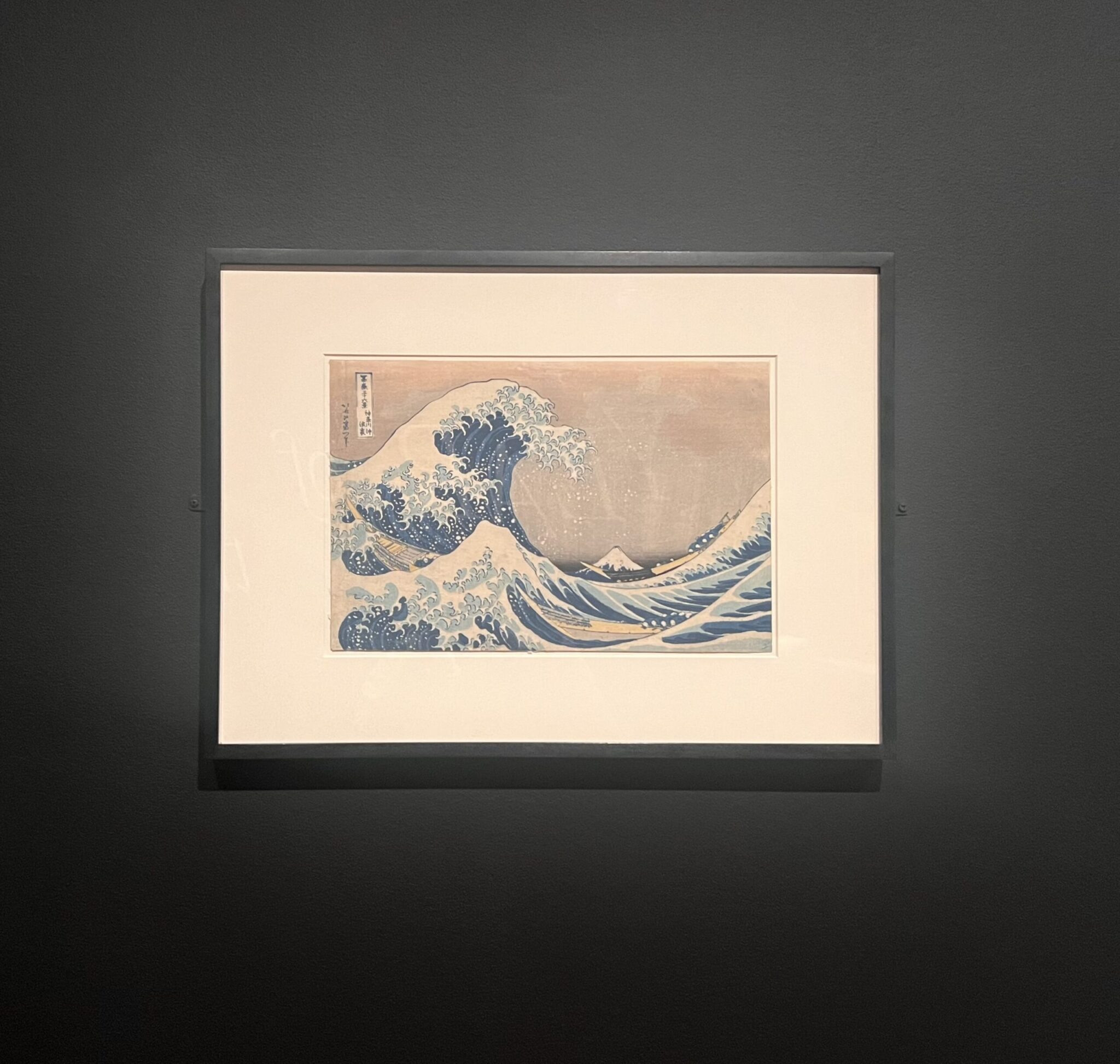‘The Great Wave’ on display at the YUAG for a limited time
From March to July, Hokusai’s famous print will be available to view at the YUAG’s “Year of the Dragon” exhibition.

Kamini Purushothaman, Contributing Photographer
The Yale University Art Gallery, or YUAG, unveiled its “Year of the Dragon” exhibition, featuring East Asian art from the 17th century to the modern day.
Concurrent with the Chinese Lunar New Year, the exhibition opened on March 15. Curated by Sadako Ohki, the Japan Foundation associate curator of Japanese art, it includes artworks from the YUAG’s own collection and outside sources. The exhibition will remain up until Nov. 10.
“Originally, I was planning on a regular rotation for the Japan section,” Ohki said. “But as the plan changed, I started thinking about how I could expand it to examine Chinese and Japanese art and other art.”
Ohki said that dragon imagery is much more prominent in China than in Japan, so incorporating more Chinese works into the exhibition better fulfilled her theme. Still, many of the Japanese works feature or allude to the mythic legacy of the dragon.
Some pieces include koi fish swimming upstream, a visual that Ohki said illustrates the Japanese legend that koi fish who reach the top of a river transform into dragons. Ohki said this exemplifies the Japanese ideal of perseverance and hard work in the pursuit of success.
Another portrayal of the dragon — as the divine authority of water — manifested in the “Year of the Dragon” exhibition as well. A Japanese pair of screens from the 1600s shows two dragons amongst ocean waves. Placed next to a contemporary Japanese stoneware piece that glistens with a quartz glaze as if wet, the dragons exemplify their role as harbingers of water.
According to Ohki, one notable difference between Chinese and Japanese depictions of dragons is their claws. While the Japanese tradition does not specify a particular type of claw, Ohki explained, Chinese portrayals almost always feature five-clawed dragons, perhaps in an anthropomorphic effort to connect the dragon to the rulers of China.
According to Alicia Deng ’27, a CASA board member, the dragon represents power, “especially with its ties to imperiality as one of the most traditional Chinese motifs.”
The most recognizable piece on display, one of Hokusai’s prints of ‘The Great Wave Off Kanagawa,’ will be part of the exhibition until July. The YUAG acquired the print in 1973. According to Ohki, the piece can only withstand three months under exhibition lighting.
“Scientific reading shows any exposure beyond that time frame causes deterioration,” she said.
Of maintaining the artwork’s quality, she said that “the rule is if you display something like this for three months, you can’t show it for three years after that.”
Beside “The Great Wave” rests a contemporary work made of twelve sheets inspired by it called “The Wave.” The work, created by the Phillipines-born artist Peter Soriano, calls attention to the evolving climate crisis through a depiction of a tsunami. To Okhi, the inclusion of “The Wave” serves to bring the dragon’s legacy into the modern day.
“If the God of Water — the dragon — came today, what would he say?” she asked before answering, “He would lament.”
The “Year of the Dragon” is one of three special exhibitions on display at the YUAG this semester. The exhibition includes paintings, screens, ceramics, woodblock prints and stoneware among other mediums. Drawing from various sources, Ohki said she sought to encompass the breadth and depth of the Dragon’s significance as a motif and its symbolism within the zodiac.
According to a statement released by the YUAG’s director Stephanie Wiles, the exhibition “celebrates 2024, which is linked to the dragon in the Eastern Zodiac calendar, with a consideration of the long, complex and persistent artistic tradition surrounding this fantastical creature.”
The “Year of the Dragon” exhibition is displayed on floor 4M of the gallery, the venue for special exhibitions.







